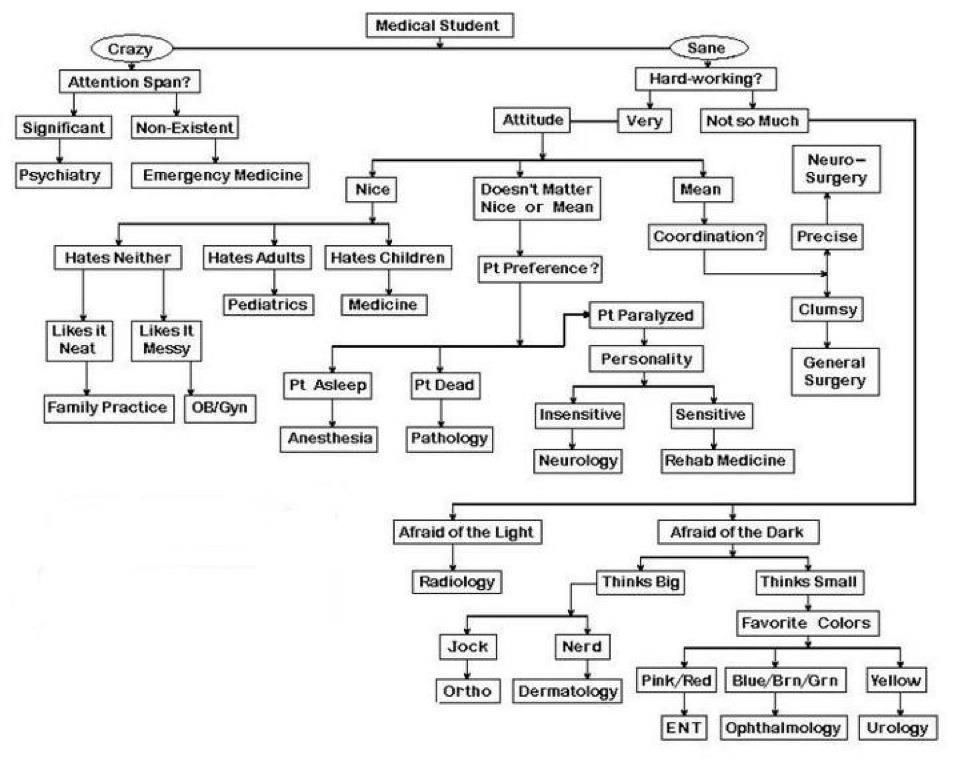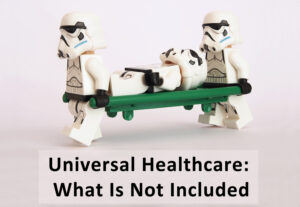Disclaimer: I am not an expert in residency programs. I also do not have superpowers with regards to admission to residency programs in Canada. Obviously. What I write in this post is based on the process that I used (back in the day!) and what I generally would talk about with medical students
This is the first in a three-part series on CaRMS, inspired by a recent set of conversations with some medical students, and is really geared towards the medical student thinking about going through the Canadian residency matching system. Of course, everyone is welcome to read!
This post does not touch on finances a whole lot, but the next two will.
Note: there is a glossary of terms at the bottom of the post for any readers for whom the terms are new.
CaRMS
Oh CaRMS.
(For any readers not familiar with this acronym, it stands for Canadian Residency Matching Service. It is used to represent both the process of going through interviews at different residency programs as well as the computer algorithm that takes everyone’s choices and spits out an answer on “Match Day” of where hundreds of medical students are going to go to spend the next 2-5+ years of their lives. CaRMS essentially – though not fully – determines your future path as a physician in terms of what field you go into, where you might end up working for your career, what sort of compromises you might have to make in your personal relationships due to upcoming distance…lots of things).
I think I started stressing about CaRMS in my first year of medical school. Back story: no one in my family is in medicine. I never realized how much more context you might get if you had family members who were in medicine (or at least a health care related field) until I met some classmates in medical school who did have some more context heading into this whole process.
Anyways, I learned about the CaRMS match sometime in the first week after getting into medical school.
Here I was, euphoric with excitement, that life was set. I got into medical school!
Then the other ball dropped.
At the end of medical school, there was another race! The race for a residency spot!

Anyways, I wrung my hands anxiously about this CaRMS thing for a couple of weeks and then settled into the rhythm of pre-clerkship medical school.
Life was good.
Sometime in early clerkship, these thoughts about CaRMS started coming up again. I was fairly lucky that I knew my top two choices early on, and going through the clerkship experience only confirmed what I had felt at the start. I definitely had peers who thought they wanted one thing, then realized they wanted another…or realized they wanted everything…or worse, realized they wanted nothing (this was happily quite rare).
The process of finding what field you want to go into is very personal – although there are some really fun flowcharts that play on the worst stereotypes we have of each specialty (see exhibit A below). (Only vaguely related but also amusing is this old Gomerblog post about the medical specialties hierarchy in the hospital.)
Anyways.
You, the medical student, have traveled through the different specialties, sometimes having them reinforce what you know to be your life’s passion, and sometimes upending what you thought you were going to dedicate more time to than the amount allotted even for your spouse and children. (I’m only being slightly facetious here – some of the specialties, especially during residency, really do make these demands on your time. Sometimes only during residency – and sometimes for the duration of your medical career).
CaRMS Applications
It’s now late spring and I have heard some medical students say it feels like CaRMS applications are around the corner. First is the stress of finding your electives of course, and then comes thinking about where to apply to for residency programs and “do I really want to write all those different personal letters?”
The answer is probably yes.
Especially if you are:
- Particularly set on being in one location.
- Particularly set on one specialty.
- Trying to get into the same place as a partner, who is also going through CaRMS in the same year.
- Really would like to match in the first round.
- (Is anyone not at least even a little bit anxious about CaRMS?)
The general advice is to apply broadly. I would agree with this.
Usually, applying broadly is in reference to geographical location for the specialty/ies you are interested in. If someone needs to stay in a particular area, then that could look at applying broadly across specialties within a smaller geographical circle. You would hopefully be able to strategize your electives to reflect a broader range of interests then.
Yes, it’s going to cost you. Here’s a breakdown of the current costs, which have apparently been lowered during the most recent 2018 cycle and is lowered again for the 2019 cycle. The truth is, you are already hemorrhaging lots of money in the name of medicine. This is a step for which I personally would not skimp. These are fair uses for your dollar employees.
I did not apply to any programs I knew for sure I did not want to work in the specialty, and I did not apply for any geographical locations where I for sure knew I did not want to live there for the next however-many-years.
At the end of the day, I think I made 17 applications, had 14 offers, turned down 3 for scheduling difficulties and 1 because I realized I really didn’t want to go live in that geographical location, and attended 10 interviews in the span of 3 weeks.
(I think the most I heard about was one classmate who attended 21. There must have been some Skype interviews in there – not sure how to fly from place to place in time for 21 in-person interviews in 3 weeks!)
Summary:
Everyone’s situation is unique, so there may be very good reasons why the recommendations below may not apply to you. I do think these recommendations can be helpful for most medical students though!
- Apply broadly.
- Yes, write all the personal letters.
- Pause your worries about the money for applications.
In the next post, we will talk about evaluating the residency programs and in the post after that, some CaRMS travel and spending specific advice!
Until next time,
-Dr. FIREfly
P.S. Staff physicians, residents – please also feel free to chime in with suggestions in the comment section below!
Glossary of Terms
CaRMS: Canadian Residency Matching Service. Please see start of post for more detailed explanation of what that entails.
Pre-Clerkship: the first part of medical school, which is classroom time. Minimal patient exposure. The time to get to know your classmates, start doing research if you’re gunning for a “competitive specialty” (though if you’re really competitive, you already started this research back in undergrad…or high school…), and first point of access for almost unlimited debt potential in the form of a line of credit.
Clerkship: the part of medical school where you’re actually seeing patients, being part of the clinical care team, and starting to get a glimpse into the whole other world that occurs in the background behind patient care.
Residency: the next part that usually comes after medical school (although some people might insert a Masters of Business Administration, Masters of Public Health, Masters of Education, or PhD somewhere in the middle). The shortest is 2 years (Family Medicine), and longest is 6 years (Neurosurgery), and most other programs are about 5 years. That is, of course, if you don’t do a fellowship (or two or three) on top of your residency in the dash to try to get a job once you’re out the other end.





